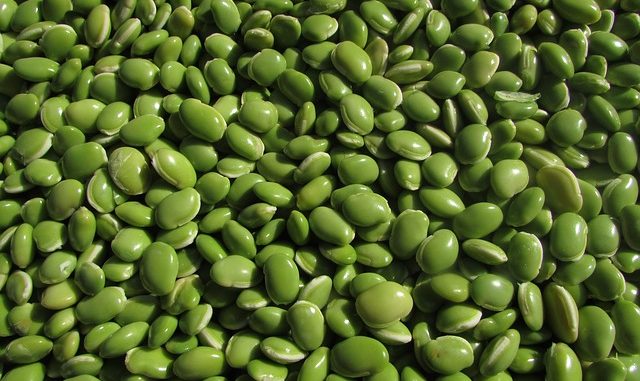
The saponins are compounds found in plants which are defined as either surface-active triterpene glycosides or as steroid glycosides in nature. In some cases they are classed as triterpenoid, spirostanol, and furostanol saponins. In most cases the structures of saponins are classified according to their carbon skeletons, the formation of which follows the main pathways for the biosynthesis of triterpenes and steroids. From this, 11 main classes of saponins have been established: dammaranes, tirucallanes, lupanes, hopanes, oleananes, taraxasteranes, ursanes, cycloartanes, lanostanes, cucurbitanes, and steroids. The dammaranes, lupanes, hopanes, oleananes, ursanes, and steroids are further divided into 16 subclasses, because their carbon skeletons are subjected to fragmentation, homologation, and degradation reactions (Vincken et al., 2007).
Saponins are non-volatile and have a bitter or sweet taste depending on their chemical structure. There are some excellent reviews available from Oakenfull (1981), Fenwick and Oakenfull (1983).
Common sources are mostly all legume seeds save for a few:- soya, chickpea, peanuts, lentils, lupins, alfalfa, oats and spinach. The most significant sources in nutritional terms are soya and peas. It’s possible to extract these compounds from other foods.
Synthesis
Structurally, the saponins are based on a skeleton derived from the 30-carbon precursor oxidosqualene to which glycosyl (sugar) residues are attached (Vincken et al., 2007).
No one pathway has been identified for their synthesis in any one particular plant. The enzymes in the pathways belong to multigene families from oxidosqualene cyclases (OSCs), cytochromes P450 (P450s) and family 1 UDP-glycosyltransferases (UGTs) (Augustin et al., 2011).
Analysis
Saponins are best analyzed by high-performance thin-layer chromatography (HPTLC) coupled to mass spectrometry (MS). The techniques are reviewed by Cheok et al., (2014).
Chickpeas (Cicer spp.) and fava beans contain saponin B and 2,3-dihydro-2,5-dihydroxy-6-methyl-4H-pyranone (DDMP) saponin. Defatted soy bean flour shows four bands in HPTLC of soyasaponin B, DDMP saponin (soyasaponin βg), derivatives of soyasaponins A and B (Barakat et al., 2015). Peas (Pisum sativum L.) contain two kinds of monodesmosidic, triterpene saponins – saponin B and DDMP saponin (Reim & Rohn, 2015).
Nutrition
There is developing evidence that these compounds have health benefits. They are not absorbed readily by the body but will complex to cholesterol to lower it. Clinical studies have suggested that these health-promoting components, alter the immune system in ways that help to protect the human body against cancers. Saponins also decrease blood lipids, lower cancer risks, and lower blood glucose response. There is little if any toxicological evidence associated with them.
Their bitter taste does count against them.
Saponin complexes are referenced as causing possible damage to intestinal mucosa and formation of less digestible protein. It is also thought that saponins have a cholesterol lowering effect and also antiviral activity against human immunodeficiency virus (HIV) in vitro (Lásztity et al., 1998).
In the past saponins were known to have some small amount of hemolytic activity however this has not been observed with pea saponins for example.
Processing Effects On Saponins
Saponins are thermal sensitive. During soaking and blanching, portions of saponins are dissolved in water and lost in the soaking, washing, and blanching liquors (Shi et al., 2004). Saponin loss however is much more variable than this statement suggests however. One study looked at changes in saponin content as well as general composition changes in both chickpeas (Cicer arietinum) and lentils (Lens culinaris). No matter how the legumes were soaked, the saponin content did not change irrespective of the pH. During cooking the native saponin, soyasaponin VI, was partially degraded during cooking into soyasaponin I, and both of these saponins leached into the cooking solution, which was 2−5% and 6−14% for chickpea and lentil, respectively. An overall loss of saponin content was found for lentil (15−31% loss), but none was observed for chickpea (Ruiz et al., 1996).
An optimum thermal process can increase the stability and maintain the saponins in canned bean products, which is useful for assisting the food industry to improve thermal processing technology and enhance bean product quality.
References
Augustin, J. M., Kuzina, V., Andersen, S. B., & Bak, S. (2011). Molecular activities, biosynthesis and evolution of triterpenoid saponins. Phytochemistry, 72(6), pp. 435-457. https://doi.org/10.1016/j.phytochem.2011.01.015
Barakat, H., Reim, V., Rohn, S. (2015) Stability of saponins from chickpea, soy and faba beans in vegetarian, broccoli-based bars subjected to different cooking techniques. Food Res. Int. 76(1) pp. 142-149 https://doi.org/10.1016/j.foodres.2015.03.043
Cheok, C. Y., Salman, H. A. K., & Sulaiman, R. (2014). Extraction and quantification of saponins: A review. Food Research International, 59, pp. 16-40. https://doi.org/10.1016/j.foodres.2014.01.057
Fenwick, D. E.; Oakenfull, D. (1983) Saponin content of food plants and some prepared foods. J. Sci. Food Agric., 34, pp. 186-191
Lásztity, R., Hidvégi, M., & Bata, Á. (1998). Saponins in food. Food Reviews International, 14(4), pp. 371-390.
Oakenfull, D. G. (1981) Saponins in food – A Review. Food Chem., 6, pp. 19-40
Reim, V. Rohn, S. (2015) Characterization of saponins in peas (Pisum sativum L.) by HPTLC coupled to mass spectrometry and a hemolysis assay. Food res. Int. 76(1) pp. 3-10 https://doi.org/10.1016/j.foodres.2014.06.043
Ruiz, R. G., Price, K. R., Arthur, A. E., Rose, M. E., Rhodes, M. J., & Fenwick, R. G. (1996). Effect of soaking and cooking on the saponin content and composition of chickpeas (Cicer arietinum) and lentils (Lens culinaris). Journal of agricultural and food chemistry, 44(6), pp. 1526-1530. https://pubs.acs.org/doi/abs/10.1021/jf950721v
Shi, J., Arunasalam, K., Yeung, D., Kakuda, Y., Mittal, G., & Jiang, Y. (2004). Saponins from edible legumes: chemistry, processing, and health benefits. Journal of medicinal food, 7(1), pp. 67-78.
Vincken, J. P., Heng, L., de Groot, A., & Gruppen, H. (2007). Saponins, classification and occurrence in the plant kingdom. Phytochemistry, 68(3), pp. 275-297 https://doi.org/10.1016/j.phytochem.2006.10.008


Leave a Reply